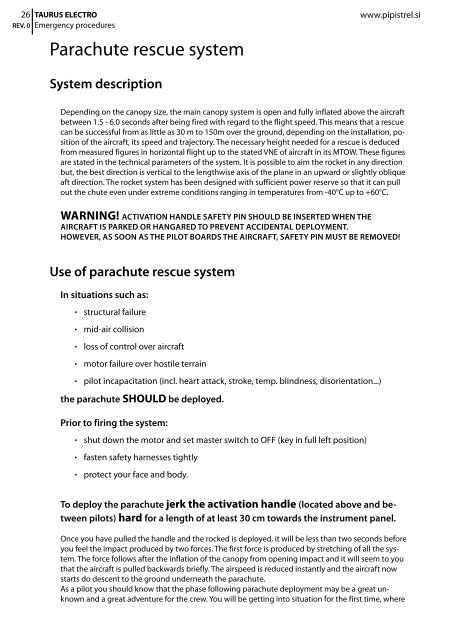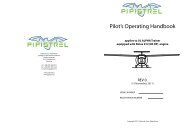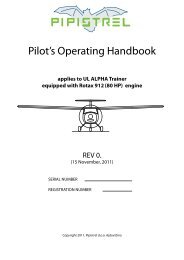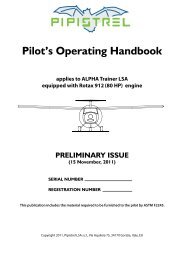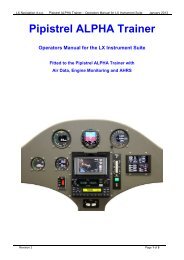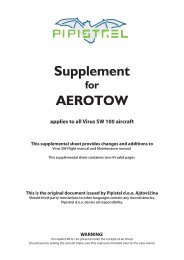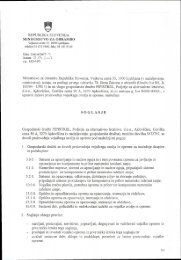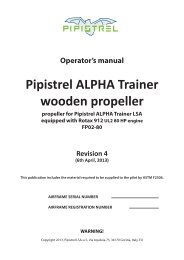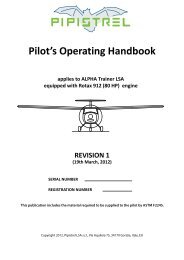Taurus ELECTRO manual 472 ENG.pdf - Pipistrel
Taurus ELECTRO manual 472 ENG.pdf - Pipistrel
Taurus ELECTRO manual 472 ENG.pdf - Pipistrel
Create successful ePaper yourself
Turn your PDF publications into a flip-book with our unique Google optimized e-Paper software.
26 TAURUS <strong>ELECTRO</strong> www.pipistrel.si<br />
Emergency procedures<br />
REV. 0<br />
Parachute rescue system<br />
System description<br />
Depending on the canopy size, the main canopy system is open and fully inflated above the aircraft<br />
between 1.5 - 6.0 seconds after being fired with regard to the flight speed. This means that a rescue<br />
can be successful from as little as 30 m to 150m over the ground, depending on the installation, position<br />
of the aircraft, its speed and trajectory. The necessary height needed for a rescue is deduced<br />
from measured figures in horizontal flight up to the stated VNE of aircraft in its MTOW. These figures<br />
are stated in the technical parameters of the system. It is possible to aim the rocket in any direction<br />
but, the best direction is vertical to the lengthwise axis of the plane in an upward or slightly oblique<br />
aft direction. The rocket system has been designed with sufficient power reserve so that it can pull<br />
out the chute even under extreme conditions ranging in temperatures from -40°C up to +60°C.<br />
WARNING! Activation handle safety pin should be inserted when the<br />
aircraft is parked or hangared to prevent accidental deployment.<br />
However, AS SOON AS THE pilot boards the aircraft, safety pin MUST be removed!<br />
Use of parachute rescue system<br />
In situations such as:<br />
• structural failure<br />
• mid-air collision<br />
• loss of control over aircraft<br />
• motor failure over hostile terrain<br />
• pilot incapacitation (incl. heart attack, stroke, temp. blindness, disorientation...)<br />
the parachute SHOULD be deployed.<br />
Prior to firing the system:<br />
• shut down the motor and set master switch to OFF (key in full left position)<br />
• fasten safety harnesses tightly<br />
• protect your face and body.<br />
To deploy the parachute jerk the activation handle (located above and between<br />
pilots) hard for a length of at least 30 cm towards the instrument panel.<br />
Once you have pulled the handle and the rocked is deployed, it will be less than two seconds before<br />
you feel the impact produced by two forces. The first force is produced by stretching of all the system.<br />
The force follows after the inflation of the canopy from opening impact and it will seem to you<br />
that the aircraft is pulled backwards briefly. The airspeed is reduced instantly and the aircraft now<br />
starts do descent to the ground underneath the parachute.<br />
As a pilot you should know that the phase following parachute deployment may be a great unknown<br />
and a great adventure for the crew. You will be getting into situation for the first time, where


